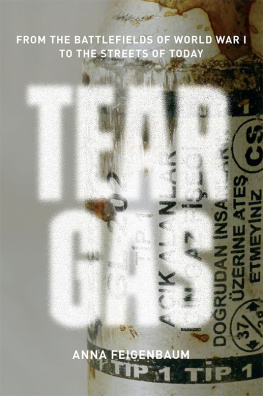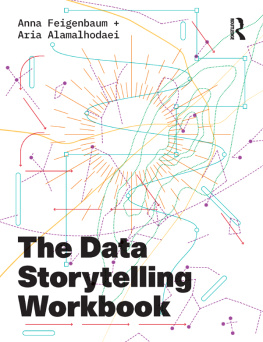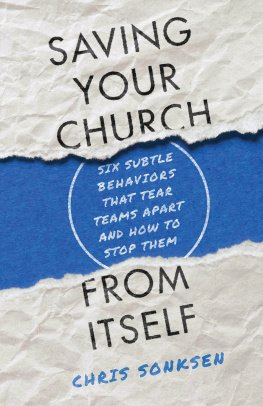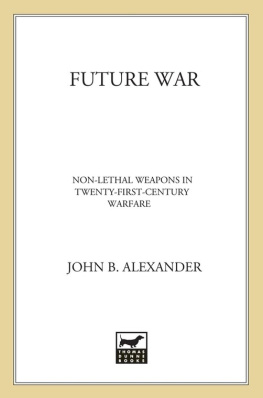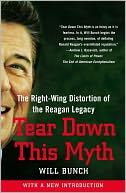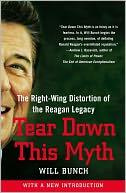Names: Feigenbaum, Anna, author.
Title: Tear gas : from the battlefields of World War I to the streets of today / Anna Feigenbaum.
Description: London ; Brooklyn, NY : Verso, 2017. | Includes bibliographical references and index.
Identifiers: LCCN 2017022066 | ISBN 9781784780265 (paperback) | ISBN 9781784780272 (UK EBK) | ISBN 9781784780289 (US EBK)
Subjects: LCSH: PoliceEquipment and suppliesHistory. | Tear gasHistory. | Tear gas munitionsHistory. | Gas industryHistory. | Weapons industryHistory. | Chemical arms controlHistory. | World War, 19141918Chemical warfare. | BISAC: POLITICAL SCIENCE / Political Freedom & Security / Civil Rights. | SOCIAL SCIENCE / Violence in Society. | HISTORY / Modern / 20th Century.
The defiant protester. The running crowd. The chaos. You may have seen so many shots of tear gas smoke that these images have come to feel like stock photography. A poison cloud that has become a lazy signifier of troubled times, a metaphor that has lost its power through repetition. You turn the page. You flick the channel. Your thumb scrolls down the Twitter feed. After all, they say its safe.
On February 14, 2011, two weeks into the Arab Spring uprisings, people in the tiny Gulf state of Bahrain called for their own day of action. Peaceful pro-democracy demonstrators flocked to the streets. Young people, Sunni and Shia, gathered at the capital city of Manamas Pearl Roundabout, many carrying Bahraini flags. They called for a new constitution that would end the royal familys rule. As they marched, the government retaliated with a violent crackdown. Rubber bullets flew and tear gas saturated the streets. The police killed two protesters that day. The BBC reported that the Saudi and US governments might soon intervene.
As the protests continued, the police shot tear gas into cars, homes, and mosques. Hundreds went to the hospital with head trauma, lost eyes, miscarriages, and respiratory failure. Bahraini civilians and independent journalists used social media to distribute and circulate images of canisters bearing the logos of the US companies Federal Laboratories and Combined Systems Inc., along with Brazilian exports from Condor Non-Lethal Technologies. The New York Times wrote of systematic and disproportionate use of tear
While Bahrains weaponized use of tear gas exceeded that of its neighbors, 2011 came to be known as both the Year of the Protester and the Year of Tear Gas. Sales executives reported that tear gas purchases had tripled. Excessive use in Egypt made headlines. Deployments in Occupy protest camps in the United States, including repeated close-contact pepper-spraying of unarmed protesters, often in confined locations, drew controversy. In Chile, police use of tear gas on student protestors was so excessive that the medical community intervened, putting pressure on the government to change its policies toward tear gas use, with some success: a study released by Chilean researchers on the effects of tear gas on pregnant women caused a temporary halt in the governments deployment of the weapon.
Since 2011, tear gas remains the international weapon of choice for riot control. Sales projections are still up, with business booming in the Middle East and markets growing in Africa and South Asia. Hundreds more around the world have died from its effects. People have lost eyes and limbs. They have suffered brain damage, third-degree burns, respiratory problems, and miscarriages. Their animals and their crops have been poisoned.
How much damage has tear gas caused? How many lives has it harmed? Nobody knows, because nobody counts. In fact, there is no legal obligation in any country, anywhere in the world, to record the number of deaths and injuries from tear gas. Likewise, there is no legal obligation to record its deployment, its export, its purchase, or its environmental damage. For nearly a hundred years now we have been promised that tear gas is safe. Its just clouds of smoke that make you cryno need to record its harms. The deaths are just accidents. After all, would you rather they shot you for protesting?
In 2013, our research team at Bournemouth University began to attempt to map mass tear-gassings around the world. Limited as we were by language barriers and flooded with new reports, our numbers were far from precise. But certain trends began to emerge.
In the first twenty days of Turkeys Occupy Gezi protests, police used 130,000 gas canisters of tear gasthe equivalent of a years supplybefore quickly ordering more stock. Hundreds of these canisters sent protesters to the hospital with muscular, eye, and head injuries. On May 31, 2013, a tear gas canister hit Lobna Allami in the head during a violent crackdown on peaceful demonstrators in Taksim Square. A dancer with a masters degree who spoke four languages and engaged in volunteer work from litter collection to animal rescue, Lobna was known for speaking out about injustice. After twenty-five days in a coma, two brain surgeries, and months in intensive care, Lobna survived. The tear gas canister had fractured her skull, causing bone fragments to pierce her brain. I am grateful that I am alive, Lobna told reporters from the newspaper Hurriyet after her recovery. But I cry a lot because a lot of me, my abilities and my knowledge, are gone. I cannot read, I cannot write. And worst of all, I cannot speak the way I want to. Lobna was one of more than eight thousand people injured by police use of force during the 2013 protests in Turkey (more than two hundred of them with head or brain trauma).
On June 15, 2014, in Rio de Janeiro, two hundred marchers faced tear gas and stun grenades on their approach to Maracan Stadium, host of the World Cup. Their campaigns against austerity measures, government corruption and wealth inequality were met with an arsenal of less lethal weapons. Employing tactics imported from US SWAT (Special Weapons and Tactics) teams in the early 2000s, Brazilian police clad in riot gear released chemical agents supplied by Rios homegrown company, Condor Non-Lethal Technologies.
Just months later, the uprisings in Ferguson, Missouri, following the lethal police shooting of Mike Brown, became a tipping point in public debate around police militarization. After getting tear-gassed for a couple of days in Ferguson, protester Tory Russell told a reporter for the BBC, You no longer feel American. He realized:
It does something to you first mentally before it even hits you. You smell the tear gas, as it goes in. Its not even air when you breathe it in, so you are actually choking. Right? And then you dont know and you panic. Mentally, you dont know what to do. It takes away your reasoning, instantly. You dont know what to do. Then you try to scream, you cant breathe. It goes into your lungs, your chest, it constricts. You cant breathe And all this is in like ten seconds. Then you just start crying. Tears just flow down, you start sneezing, coughing. If you dont get out of that five-yard ratio, then youre instantly going down to the ground.

